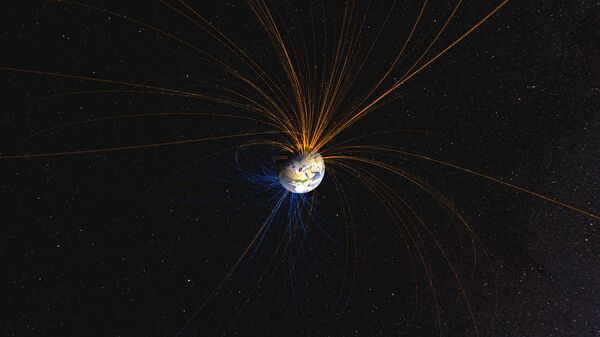New studies from University of Wisconsin-Madison geologist Brad Singer and his colleagues suggest that the most recent reversal of Earth’s magnetic field, some 770,000 years ago, took at least 22,000 years to complete, which is several times longer than previous theories claimed.
According to the collaborative study with researchers at Kumamoto University in Japan and the University of California, Santa Cruz, published by Singer on 7 August in the journal Science Advances, new analysis based on advances in measurement capabilities and a global survey of lava flows, ocean sediments and Antarctic ice cores provides a detailed look at Earth's magnetic field.
"Reversals are generated in the deepest parts of the Earth's interior, but the effects manifest themselves all the way through the Earth and especially at the Earth's surface and in the atmosphere. Unless you have a complete, accurate and high-resolution record of what a field reversal really is like at the surface of the Earth, it's difficult to even discuss what the mechanics of generating a reversal are," said Singer.
Geologists, like Singer, are able to survey information going back millions of years contained in new rocks forming either as volcanic lava flows or sediments deposited on the sea floor, since they record the magnetic field at the time of their formation.
Singer and his team collected samples of lava flows from Chile, Tahiti, Hawaii, the Caribbean and the Canary Islands.
The researchers combined magnetic readings and radioisotope dating of samples from seven lava flow sequences to recreate the magnetic field over a span of about 70,000 years, centred on the Matuyama-Brunhes reversal, the most recent one.
Accurate dating of the lava flows relied on upgraded methods developed in Singer's WiscAr geochronology lab.
The researchers also used Antarctic ice cores to track deposition of beryllium, produced by cosmic radiation colliding with the atmosphere. When the magnetic field is reversing, it weakens, allowing more radiation to hit the atmosphere, producing more beryllium.
The experts found that the final reversal was quick by geological standards, less than 4,000 years, but preceded by an extended period of instability that included two shifts stretching back another 18,000 years.
That span is more than twice as long as suggested by recent theories that all reversals wrap up within 9,000 years.
"Now we have a richer record and better-dated record of this last reversal than ever before," said Singer.
Since humanity began recording the strength of the magnetic field, it has decreased in strength about five per cent each century. Studies like Singer's show a weakening field might be a precursor to an eventual reversal.
Scientists have been suggesting that a reversing field might significantly affect navigation, satellite and terrestrial communication.
Conspiracy theorists have been claiming a likely magnetic reversal of the poles could put humanity and all life on Earth in danger.
The current study, however, suggests society would have generations to adapt to a lengthy period of magnetic instability.
The latest World Magnetic Model was designed to last until 2020, but magnetic north's rapid surge toward Siberia was so great, that researchers had to amend the model early.
The next version is scheduled for release at the end of 2019.


